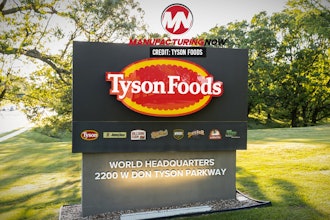The Environmental Protection Agency (EPA) recently revised its 50’ Rodenticide Risk Mitigation Decision, which prohibited rodenticide bait placements further than 50 feet from a building. The revised rule extends the use of outdoor rodenticide products from 50 feet to 100 feet, which benefits food processors in many ways, according to Patricia Hottel of McCloud Services.
Q: What is the 2008 Rodenticide Risk Mitigation Decision and how has it been revised?
A: In 2008, EPA published its final decision regarding required label changes for ten different rodenticides. The reason behind the EPA mandate was to reduce the potential risks to non-target wildlife through restricting how these products were sold and applied. The changes affected the following active ingredients in rodenticides:
- Brodifacoum
- Bromethalin
- Cholecalciferol
- Difethialone
- Warfarin
- Bromadiolone
- Chlorophacinone
- Difenacoum
- Diphacinone
- Zinc Phosphide
Under the 2008 changes, labels were required to restrict the distance a rodenticide could be placed away from a building. This distance was specified as 50 feet. EPA also required manufacturers to list only certain commensal rodents on the label: Norway rat, roof rat and house mouse. Additional requirements regarding packaging and selling of rodenticides were aimed at consumer uses of rodenticide baits. The new labels started appearing on product packaging in 2009 with full implementation completed in June of 2011.
The National Pest Management Association and other groups lobbied EPA for changes to the 50-foot restriction. There were several areas where the distance restriction was hampering the efforts of pest management professionals to protect food facilities and other areas from the damage caused by rats and mice. EPA agreed and extended the distance to 100 feet last month. They also expanded buildings to man-made structures. Pest management applicators are required to abide by the product label they are using. New labels are being developed by the manufactures.
Q: What prompted the decision?
A: There were areas left susceptible to commensal rodent issues because they did not fit the profile of the permitted treatment sites. Some examples of these sites include exterior areas where commodities are stored in crates, pods and bunkers. Dumpsters, which are often placed away from buildings to reduce pest pressures on the structure, might be placed too far for rodenticide use. Caves used as food storage warehouses would not necessarily qualify as “buildings.”
Q: How does the revision affect food manufacturers?
A: The increased distance will allow for further flexibility in protecting buildings and structures. It is common practice to use multiple lines of defense on the exterior of food plants to prevent migrations of rodents into structures. This increased distance will help intercept rodents at a further distance from structures where needed. It will also expand those areas that can be covered with the ability to place equipment away from buildings and other man-made structures. One important note is that the EPA has specifically stated that fences are not considered man-made structures for purposes of the label. The return to traditional “fence-line baiting” will not be allowed.
Q: What pests pose the greatest risk to food processing facilities?
A: The original changes would have the greatest affect on commensal rats since these are the species with the greatest home ranges. Rats may move the farthest distances when invading structures. Their burrowing habits could also have damaging effects on levies, embankments, etc., and pose safety risks from the undermining of soil. Commensal rats are also typically harder to trap and substituting traps for rodenticides is often not as efficacious.
Q: What should processors consider when implementing a pest control program in their facility?
A: As far as rodents, a detailed inspection of the facility should be performed. An analysis of the site should be made to determine the pressures both on site and from surrounding properties for pest rodents. The rodent management plan should then be developed based on these findings. Equipment should be focused in areas where conducive conditions, pest pressures from neighboring sites and potential structural entrance points are highest. Considerations must also be made to third party audit compliance requirements.
Patricia Hottel is technical director at McCloud Services, based in Hoffman Estates, Ill. McCloud Services serves the largest food-related brands in the U.S. For more information, please visit www.mccloudservices.com.
Interview by Lindsey Coblentz, Associate Editor

















